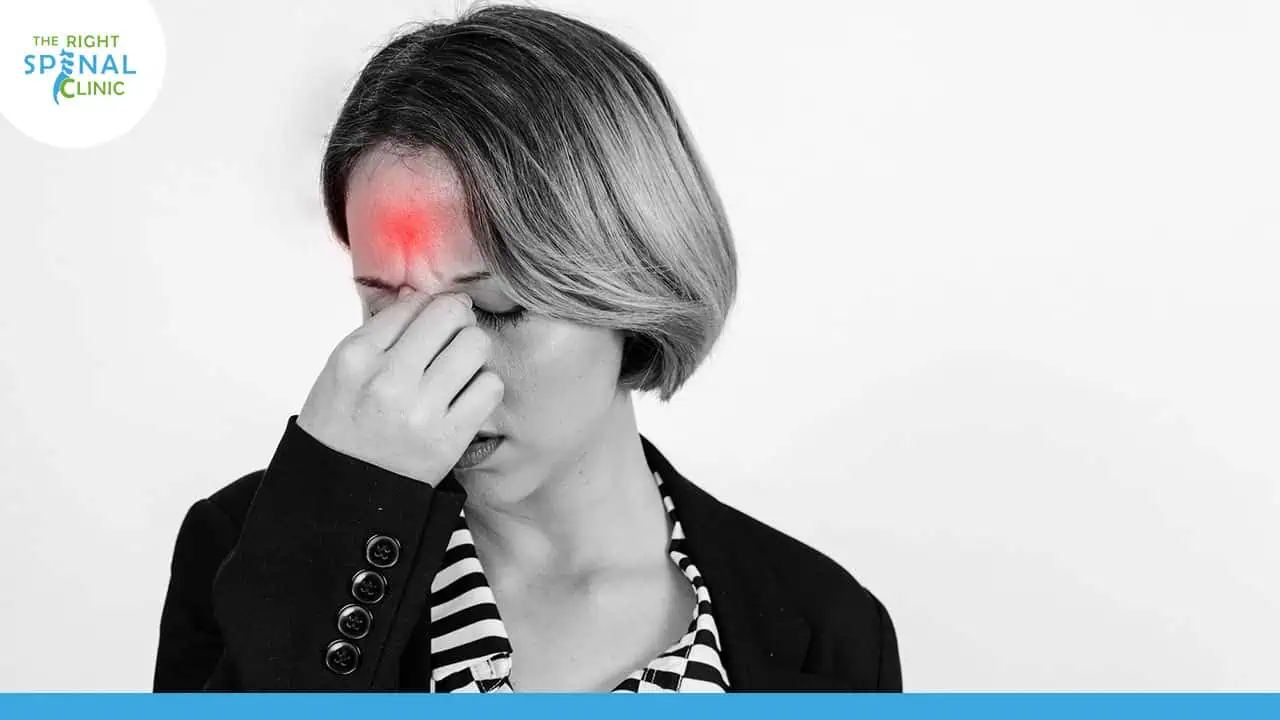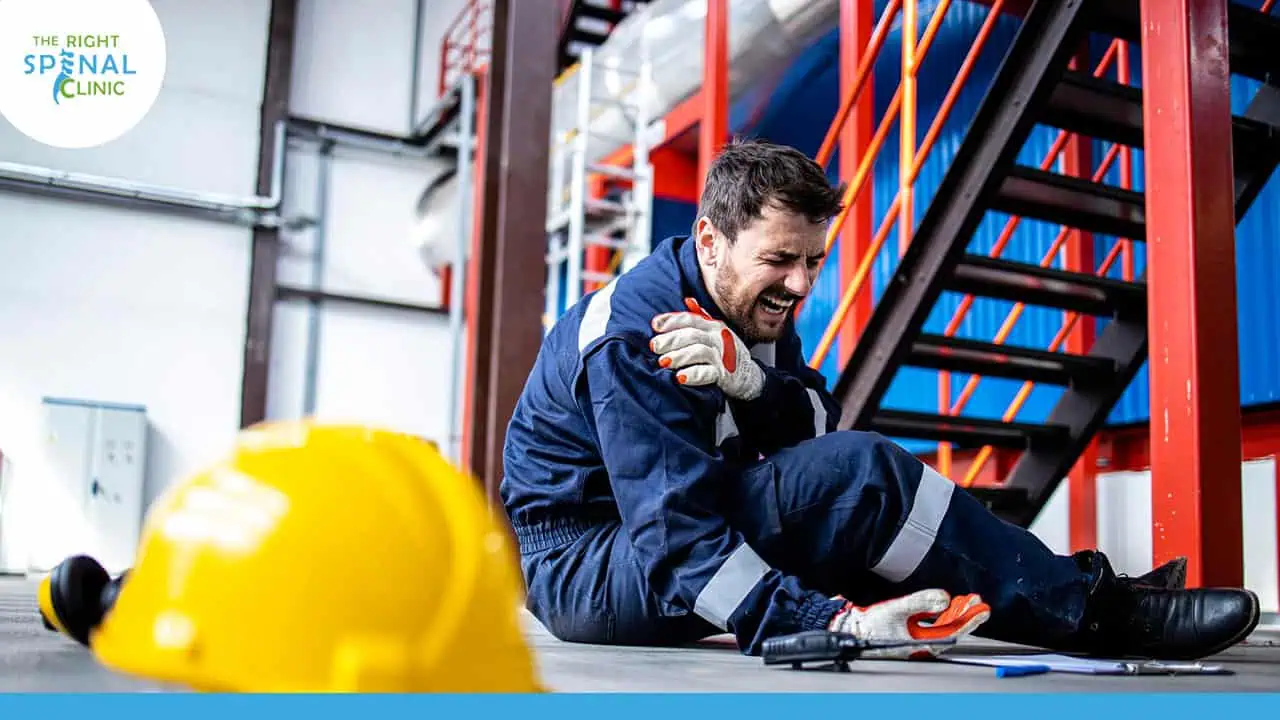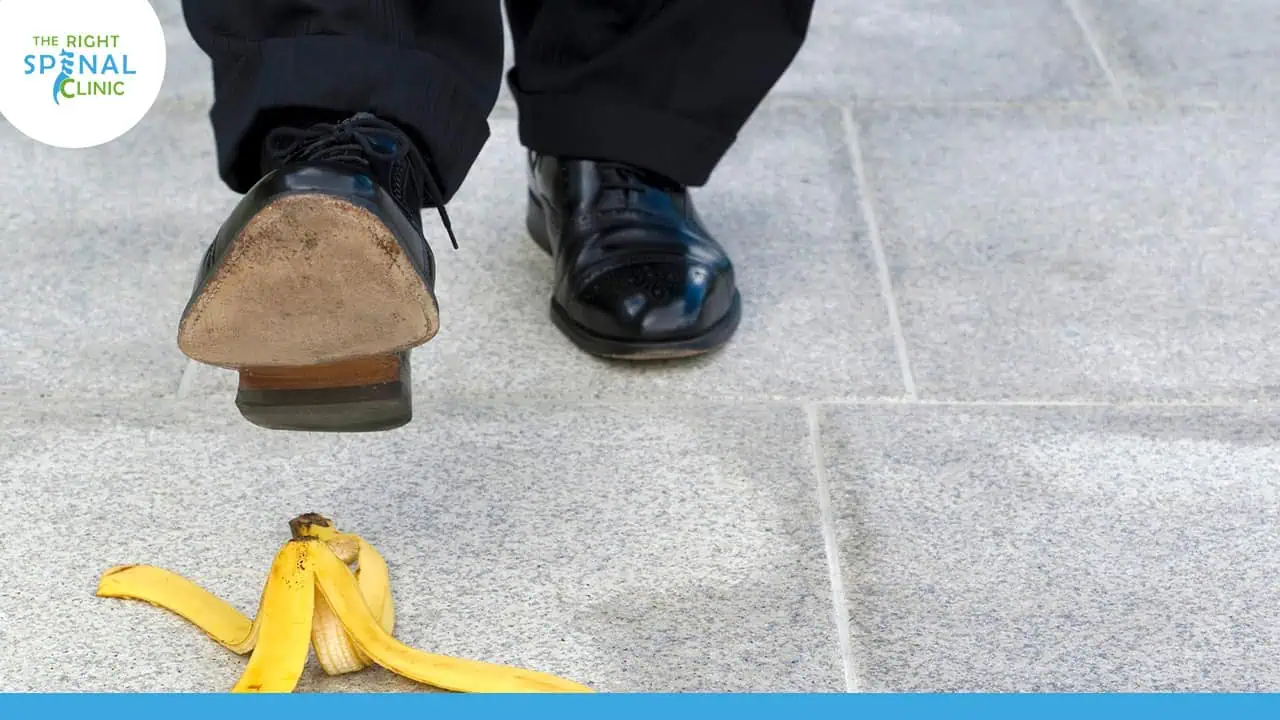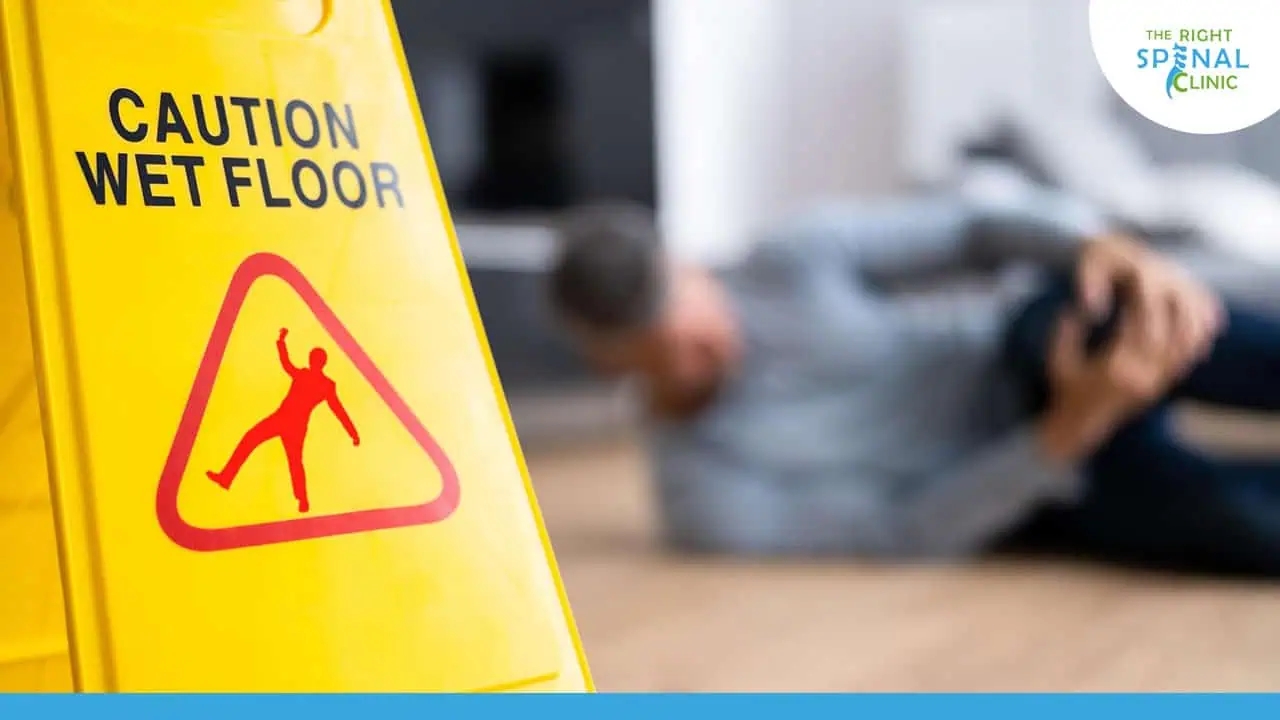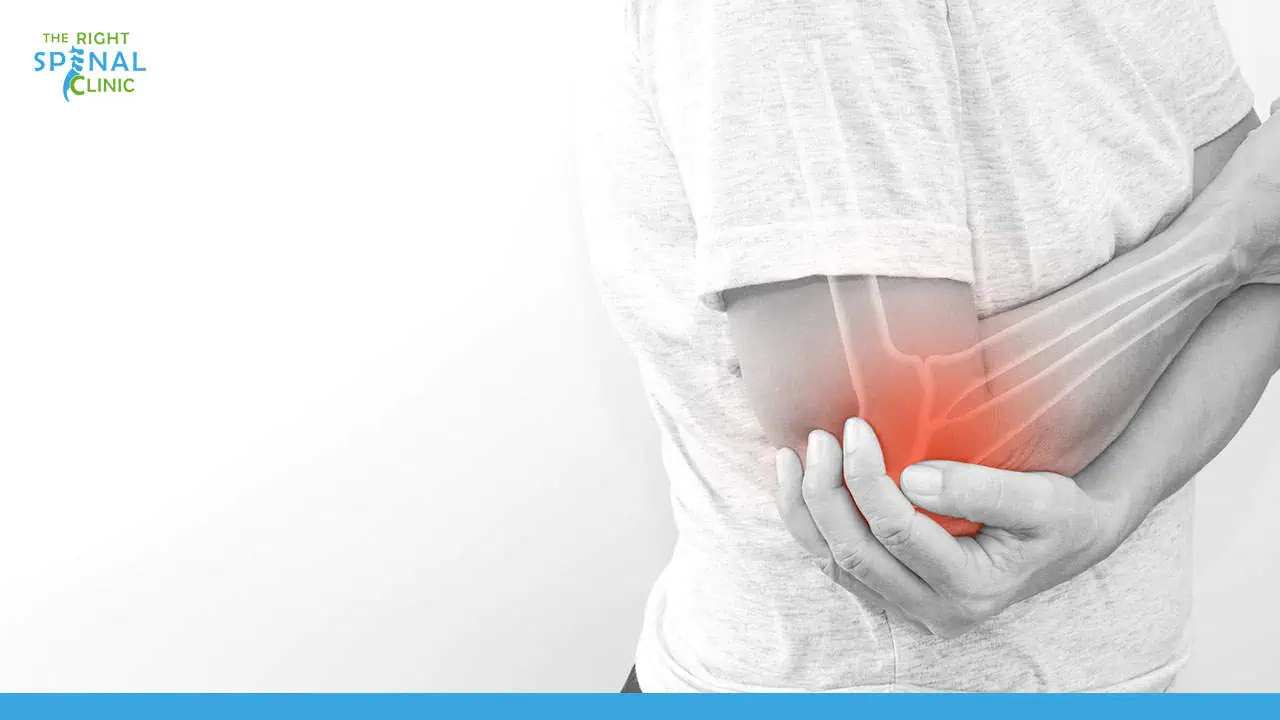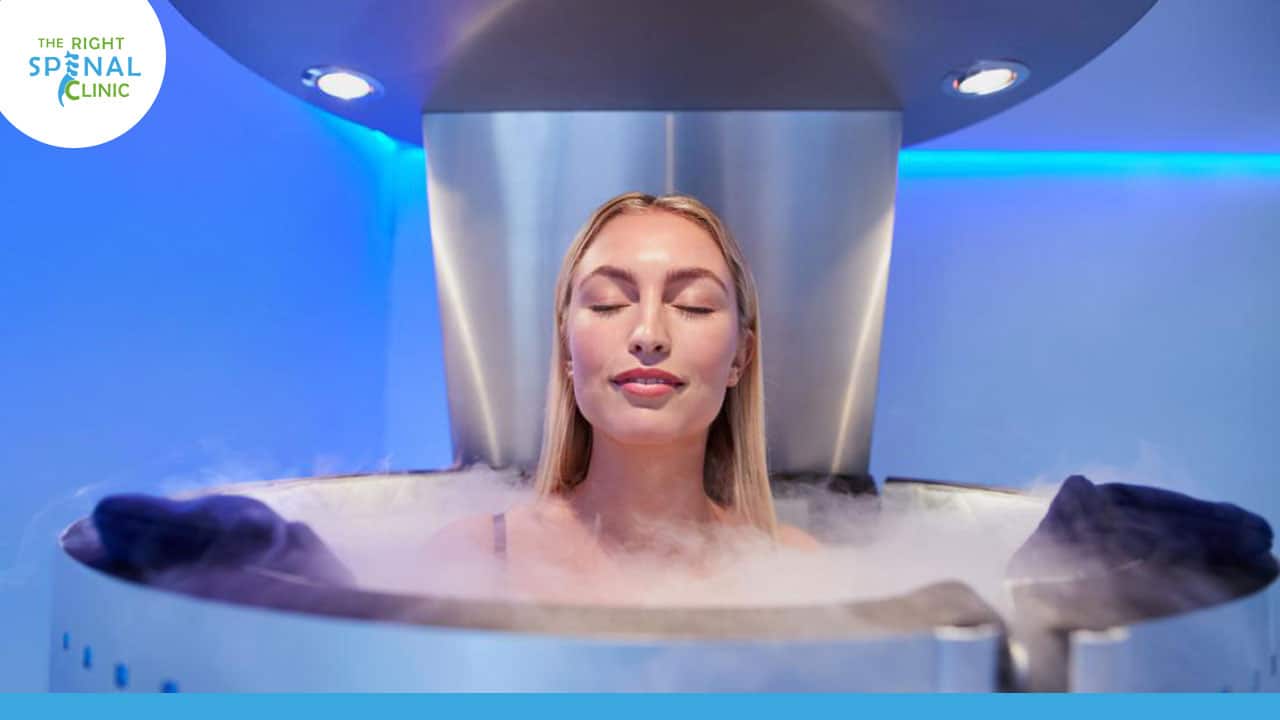
Do you suffer from chronic muscle pain or lingering sports injuries? Perhaps you're a cancer patient seeking traditional treatment options. Cryotherapy, a therapy using extreme cold to destroy abnormal cells inside the body, has emerged as a potential solution for various physical and mental health concerns.
Here at The Right Spinal Clinic in Tampa, Florida, we're proud to offer cryotherapy services to our patients. This comprehensive guide delves into the world of cryotherapy, exploring its different applications, potential benefits, and everything in between.
We'll break down the various types of cryotherapy, including localized and whole-body options. You'll learn about how cryotherapy works (mechanism of action) to potentially reduce pain, inflammation, and even some mental health conditions. This guide will also address important considerations like potential side effects and whether cryotherapy is right for you.
So, whether you're seeking traditional cryotherapy for cancer treatment or are curious about the latest trends in sports recovery, this guide offers a comprehensive look at cryotherapy – its potential benefits, limitations, and everything in between. Let's explore the science behind the cold!
What is Cryotherapy?
Cryotherapy, literally meaning "cold therapy," is a technique that utilizes extreme cold temperatures for various medical and wellness purposes. It comes in two main forms:
Localized cryotherapy
This targets a specific area of the body. Dermatologists often use cryotherapy to treat common skin conditions like warts, keloids, or to remove precancerous cells. Cryotherapy treatment can also be used for pain relief and reducing inflammation caused by injuries.
Whole body cryotherapy (WBC)
This approach involves exposing your entire body to extremely cold temperatures (achieved with liquid nitrogen or argon gas) for a short duration, typically two to three minutes. Whole body cryotherapy is a relatively new therapy, and research on its benefits for various medical conditions is ongoing. Proponents claim it can improve muscle soreness, pain, anxiety, and depression. However, there's limited scientific evidence to definitively support these claims.
Cold Water Immersion
Cold water immersion is another form of cold therapy gaining popularity. Similar to localized cryotherapy, cold water immersion aims to reduce inflammation and muscle soreness by constricting blood vessels and reducing blood flow to the immersed area. While research is ongoing, cold water immersion may offer a more accessible alternative to cryotherapy for some people. The mechanism of action for cold water immersion is similar to localized cryotherapy, but without the extreme cold temperatures.
How Does Cryotherapy Work?
The mechanism of action for cryotherapy depends on the type used:
- Localized cryotherapy: When extreme cold is applied to a targeted area, it destroys cells by forming ice crystals within them. This freezing process disrupts the cell structure, leading to cell death. The body then naturally removes the dead tissue, allowing for healing and the removal of unwanted growths. This method, also known as cryosurgery or cryoablation, can be used to treat skin cancer and some precancerous lesions.
- Whole body cryotherapy: The exact mechanism for whole body cryotherapy's potential benefits is still being explored. Some theories suggest that exposure to extreme cold triggers the body's "fight-or-flight" response, leading to increased circulation and the release of endorphins (natural painkillers). Additionally, the cold may reduce inflammation throughout the body. While some propose WBC for conditions like rheumatoid arthritis and multiple sclerosis, there's limited evidence. Unlike localized cryotherapy, WBC is not a medical treatment and may cause side effects like frostbite.
- Cold water immersion: Another form of cold therapy gaining popularity is cold water immersion. Similar to localized cryotherapy, cold water immersion aims to reduce inflammation and muscle soreness by constricting blood vessels and reducing blood flow to the immersed area. While research is ongoing, cold water immersion may offer a more accessible alternative to cryotherapy for some people.
Here's a quick comparison:
| Feature | Localized Cryotherapy | Whole-body Cryotherapy (WBC) | Cold Water Immersion |
| Target Area | Specific | Entire Body | Limbs, typically |
| Common Uses | Skin conditions (warts, keloids), precancerous cells, pain relief | Potential benefits for soreness, pain (limited evidence) | Muscle soreness, pain relief, inflammation |
| Treatment Method | Liquid nitrogen or argon gas probe applied directly to the treatment area | Exposure to extremely cold temperatures (-200°F to -300°F) inside a chamber | Submersion in cold water (typically 40-50°F) |
| Medical Use | Established for various skin conditions and some cancers (cryosurgery/cryoablation) | Not a recognized medical treatment | May be used as a complementary therapy for some conditions |
| Side Effects | Skin irritation, numbness, tingling | Potential for frostbite if not administered properly | Shivering, temporary discomfort |
Benefits
Cryotherapy, while not a cure-all, has emerged as a trendy approach for various health and wellness concerns. Research is ongoing to solidify its effectiveness for all applications, but some potential benefits have been observed. Let's explore some of the ways cryotherapy may be helpful:
1. Pain Relief and Muscle Healing
Cryotherapy may be beneficial in reducing pain and inflammation, potentially aiding muscle recovery after exercise or injury. This effect of cryotherapy is similar to using traditional cold therapy methods like ice packs. When applied to a sore muscle or joint, the low temperature of cryotherapy may reduce pain by constricting blood vessels and numbing nerves in the treated area. This can be particularly helpful for athletes who experience muscle soreness after intense workouts. Cryotherapy treatment, specifically localized cryotherapy, is a well-established practice used by physical therapists and sports medicine professionals to manage pain and promote healing.
2. Weight Loss
While some claim cryotherapy can boost metabolism and promote weight loss, current evidence is inconclusive. The theory behind this potential benefit is that exposure to extreme cold temperatures forces the body to work harder to maintain its core temperature, thereby burning more calories. This process is similar to the body's response in a cold environment. However, studies haven't definitively shown that cryotherapy leads to significant weight loss. More research is needed to determine whether cryotherapy can be a helpful tool for weight management, especially when combined with a healthy diet and exercise routine. It's important to remember that cryotherapy should not be solely relied upon for weight loss.
3. Reduced Inflammation
Cryotherapy's ability to reduce inflammation throughout the body is a potential benefit for conditions like rheumatoid arthritis. Inflammation is the body's natural response to injury or infection, but chronic inflammation can contribute to a variety of health problems. Cryotherapy may help reduce inflammation by decreasing the production of inflammatory substances and increasing the production of anti-inflammatory substances. While cryotherapy shows promise for managing inflammation, more research is needed to confirm its efficacy for specific inflammatory conditions like rheumatoid arthritis or multiple sclerosis.
4. Preventing Dementia
The theory is that by reducing inflammation, cryotherapy might also help prevent dementia. Dementia is a general term for a decline in cognitive function that can interfere with daily life. Chronic inflammation is thought to be a contributing factor in the development of dementia, so the theory suggests that cryotherapy's anti-inflammatory properties could potentially help prevent it. However, there's limited evidence to definitively support this claim. More clinical trials are needed to determine whether cryotherapy can play a role in preventing dementia.
5. Preventing and Treating Cancer
It's important to distinguish between two uses of cryotherapy for cancer: cryosurgery and whole-body cryotherapy. Cryosurgery, or cryoablation, is a well-established medical procedure that uses extreme cold temperatures to destroy abnormal cells. This treatment is typically used for skin cancers and precancerous lesions by freezing and destroying the targeted tissue. Whole-body cryotherapy, however, is not a treatment for cancer. It involves exposing your entire body to extreme cold temperatures for a short duration, typically 2 to 4 minutes inside cryotherapy chambers. While some propose benefits for various conditions, whole-body cryotherapy has not been approved by the FDA for treating any medical condition, including cancer.
6. Reducing Anxiety and Depression
Some studies suggest that whole-body cryotherapy may help alleviate symptoms of anxiety and depression. The theory is that exposure to extreme cold triggers the body's "fight-or-flight" response, leading to increased circulation and the release of endorphins, natural mood-elevating chemicals in the brain. However, more research is needed to confirm these findings and determine whether whole-body cryotherapy is a safe and effective treatment for mental health conditions.
7. Improving Symptoms of Eczema
Early research suggests that cryotherapy may improve symptoms of eczema, a chronic skin condition characterized by itchy, inflamed, and irritated skin. Localized cryotherapy may help reduce inflammation and itching in the affected area. More studies are needed to determine the long-term effectiveness of cryotherapy for eczema and whether it can be a viable treatment option alongside traditional medications.
8. Treating Migraine Headaches
Localized cryotherapy applied to the neck area may provide temporary relief from migraine headaches by numbing nerves and reducing inflammation. The cold temperature can help constrict blood vessels and decrease blood flow, potentially easing the throbbing pain associated with migraines. However, more research is needed to confirm its effectiveness compared to other established migraine treatments.
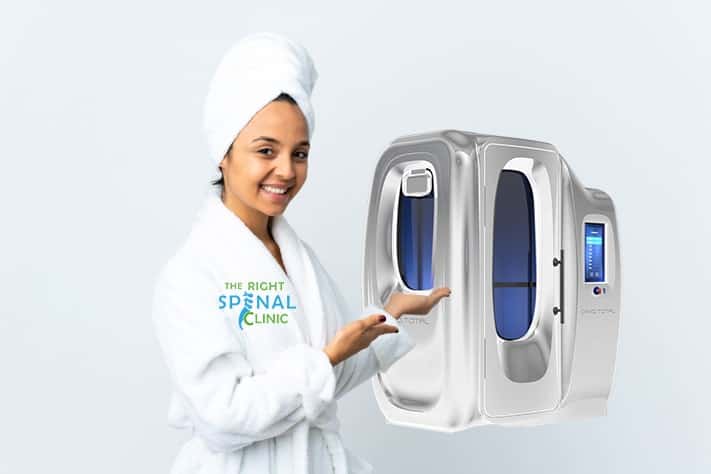
What should I expect during cryotherapy?
Your experience will depend on whether you're undergoing localized cryotherapy or whole-body cryotherapy (WBC). Here's a breakdown for each:
Localized Cryotherapy:
- Preparation: A healthcare professional will likely clean and dry the area to be treated. Depending on the treatment area, you may need to wear a gown or drape to expose the targeted spot. This could be in a medical center or even a clinic in Tampa, Florida that offers cryotherapy.
- The Procedure: A probe or applicator cooled with liquid nitrogen or argon gas will be applied to the treatment area. You may feel an intense cold sensation initially, followed by some numbness. The discomfort is usually tolerable and only lasts for a few seconds or minutes, depending on the treatment plan. This is the mechanism of action, or how localized cryotherapy works, to destroy abnormal cells or reduce inflammation.
- Length of Treatment: The treatment duration varies depending on the condition being treated and the doctor's recommendation. It typically ranges from a few seconds to several minutes, depending on the use of cryotherapy to treat a wart, reduce muscle pain, or another condition.
Whole-Body Cryotherapy (WBC):
- Preparation: You'll likely change into minimal clothing, such as a swimsuit, socks, and gloves, to minimize heat loss. Some facilities may provide protective gear like headwear and mouthguards.
- The Procedure: You'll step inside a special cryotherapy chamber that will be gradually cooled using liquid nitrogen or argon gas to extremely cold temperatures (around -200°F to -300°F). The duration of exposure is typically brief, ranging from 2 to 4 minutes. While some studies suggest WBC may help with weight loss, inflammation, and oxidative stress, or even mental health conditions, the FDA has not cleared it to treat any medical condition.
- What it Feels Like: You may experience an initial feeling of intense cold, followed by tingling or numbness in the skin. Some people report feeling energized afterward.
Cold Water Immersion:
- Preparation: Cold water immersion is a more accessible form of cryotherapy that you can do at home. All you'll need is a bathtub or large container and some cold water (ideally between 40-50°F). You can also use a cold shower if a bath isn't available. Wear a swimsuit and consider bringing a towel and warm clothes to change into afterward.
- The Procedure: Simply fill your bathtub or container with cold water and slowly immerse yourself, typically up to your shoulders, for a set time. The recommended duration varies depending on your tolerance and goals, but most people can tolerate cold water immersion for 1-5 minutes.
What should I expect after cryotherapy?
After cryotherapy, your experience can vary depending on the type used and the treated area. Here's a general idea:
Localized Cryotherapy:
- After Effects: The treated area may feel numb or tingly for a short while. You may also experience some redness or swelling, which should subside within a few hours. While cryotherapy is a treatment that uses extreme cold, these effects are usually not permanent tissue damage.
- Recovery: Recovery time is usually quick. You can resume most activities right after treatment.
Whole-Body Cryotherapy (WBC):
- After Effects: You may experience a surge of energy or euphoria after the session. Some people report feeling some tingling or numbness in the skin, but this typically fades within minutes.
- Recovery: Most people feel comfortable returning to their regular activities shortly after the session. However, avoiding strenuous exercise immediately after is recommended.
Cold Water Immersion:
- After Effects: You will likely experience an initial shock of coldness, followed by potential shivering and discomfort. This is a normal response to the cold water, and the intensity will subside within a few minutes as your body adjusts.
- Recovery: Similar to localized cryotherapy, recovery from cold water immersion is usually quick. You may experience some lingering coldness or tingling in the immersed area, but this should subside shortly.
General Tips:
- Drink plenty of fluids after cryotherapy to help your body rehydrate.
- Listen to your body and avoid strenuous activity if you experience any discomfort.
- It's important to manage expectations. While some people experience immediate benefits, cryotherapy is not a miracle cure and may require multiple sessions for noticeable results.
Important Note:
- While cryotherapy is generally safe, it's not suitable for everyone. Certain medical conditions or risk factors may exclude you from being a candidate. It's crucial to consult with a healthcare professional before undergoing cryotherapy to ensure it's safe for you, especially if you have concerns about cancer, such as cervical cancer or liver cancer. Cryotherapy used in traditional medical settings to destroy cancer cells typically refers to localized cryotherapy, or cryosurgery, not whole-body cryotherapy.
- Serious adverse effects, like frostbite, can occur if not administered properly. Frostbite is a type of severe frostbite that occurs when your skin and sometimes the tissue beneath freezes.
Recovery and Outlook
The recovery experience after cryotherapy depends on the type used (localized or whole-body) and the treated area. Here's a breakdown:
Localized Cryotherapy:
- Recovery: Recovery from localized cryotherapy is typically quick. You can usually resume most activities right after the treatment. The treated area may feel numb or tingly for a short while, and some redness or swelling might occur. These effects are usually mild and subside within a few hours. It's important to note that these temporary effects are not permanent tissue damage, which can be a risk if cryotherapy is not administered properly.
- Outlook: The outlook for localized cryotherapy depends on the specific condition being treated. For example, cryosurgery (a form of localized cryotherapy) can be a successful treatment for certain skin cancers and precancerous lesions. When used to reduce muscle pain or inflammation, localized cryotherapy may offer temporary relief.
Whole-Body Cryotherapy (WBC):
- Recovery: Most people feel comfortable returning to their regular activities shortly after a whole-body cryotherapy session. However, avoiding strenuous exercise immediately afterward is recommended. You may experience a surge of energy or euphoria after the treatment, along with some tingling or numbness in the skin. These effects typically fade within minutes.
- Outlook: While some studies suggest potential benefits of whole-body cryotherapy for various conditions like muscle soreness, pain, anxiety, and depression, the research is ongoing. The FDA has not cleared WBC to treat any medical condition. It's important to manage expectations and understand that whole-body cryotherapy is not a cure-all. It may require multiple sessions to see any noticeable results, and these results may vary depending on the individual.
Cold Water Immersion:
- Recovery: Similar to localized cryotherapy, recovery from cold water immersion is usually quick. You may experience some lingering coldness or tingling in the immersed area, but this should subside shortly.
- Outlook: Cold water immersion is primarily used for managing muscle soreness and inflammation. Studies suggest it can be an effective tool for these purposes, but more research is needed to determine its long-term impact on various conditions.
Choose The Right Spinal Clinic for Cryotherapy Treatment
Cryotherapy offers a range of potential benefits for physical and mental well-being. However, navigating the world of cryotherapy can be confusing. Here at The Right Spinal Clinic, we take pride in offering a safe and effective cryotherapy experience tailored to your individual needs.
Our team of experienced professionals can help you determine if cryotherapy is right for you and develop a personalized treatment plan to target your specific concerns. Whether you're an athlete seeking to optimize recovery or someone looking to manage chronic pain or inflammation, we can guide you through the process.
Ready to experience the potential benefits of cryotherapy?
Contact The Right Spinal Clinic today to schedule a consultation and learn more about our cryotherapy services. Call us at (813) 392 2164 or visit our website to book your appointment. We look forward to helping you achieve your wellness goals!
Things To Do In Tampa
Tampa, a city on Florida's west coast, is a hub for thrilling theme parks, fascinating historical sites, and of course, beautiful beaches. Here's a glimpse into what your trip to Tampa could hold:
- Unleash your inner adventurer at Busch Gardens Tampa Bay, a sprawling amusement park brimming with exciting rides, live shows, and captivating animal exhibits. From heart-pounding roller coasters to majestic tigers, Busch Gardens offers a unique blend of thrills and exotic encounters, celebrating diverse cultures along the way.
- Dive into the wonders of the aquatic world at The Florida Aquarium. Here, you'll encounter a dazzling array of marine life native to Florida's coast, including sharks, stingrays, sea turtles, and even a captivating coral reef exhibit.
- Immerse yourself in the rich history and vibrant culture of Ybor City, a historic district boasting Cuban roots. Explore the area on a walking tour to delve into its fascinating past, or simply wander the streets and soak up the lively atmosphere. Be sure to check out the area's renowned bars, restaurants, and cigar shops.
- Embrace the scenic beauty of Tampa with a stroll along the Tampa Riverwalk, a scenic 2.6-mile waterfront path. Perfect for walking, biking, or rollerblading, the Riverwalk offers a relaxing escape while showcasing stunning views. Explore the numerous restaurants and shops lining the path for a delightful experience.
- Channel your inner sports enthusiast by catching a thrilling Tampa Bay Lightning hockey game at Amalie Arena. Witness the electrifying atmosphere and the passionate Tampa fanbase as the Lightning battle it out on the ice.
- Escape the city buzz and find serenity at Hillsborough River State Park. Explore the park's network of hiking trails, unwind by the swimming area, or launch your boat for a peaceful exploration of the waters.
- Spark your curiosity at MOSI (Museum of Science and Industry). This interactive haven caters to all ages, offering captivating exhibits on a diverse range of topics, from the intricate human body to the vast mysteries of space exploration.
- Take a detour to Clearwater Beach, a perennially ranked beach paradise. Unwind on the pristine white sand shores, take a refreshing dip in the crystal-clear waters, or embark on a boat tour for an unforgettable dolphin encounter.
With its diverse offerings, Tampa caters to every taste, making it an ideal destination for a memorable vacation or a quick weekend getaway.
Best Beaches in the Tampa Area
Beyond the theme parks and historical sites, Tampa Bay boasts a stunning coastline fringed with pristine beaches. Whether you seek relaxation under the warm sun or adventures in the turquoise waters, here are some of the best beaches to explore:
- Treasure Island: Treasure Island lives up to its name, offering a delightful beach experience. Families will find it particularly ideal, with calm waters perfect for splashing around and soft sandcastle-building opportunities. Explore the numerous shops and restaurants lining the area for added convenience.
- Honeymoon Island State Park: Honeymoon Island State Park beckons with its untouched beauty. Bask on the sugar-white sand, embark on a rewarding kayak tour through the mangroves, or go shelling to discover hidden treasures along the shore. The park also offers picnic areas and concession stands for a complete beach day.
- Fred Howard Park: Escape the crowds at Fred Howard Park, a hidden gem known for its natural beauty. This beach offers a chance to reconnect with nature, with opportunities for birdwatching, picnicking under the shade of palm trees, or simply soaking up the tranquility.
- Clearwater Beach: No list of Tampa Bay beaches is complete without mentioning Clearwater Beach. Consistently ranked among the best, Clearwater Beach boasts powdery white sand, crystal-clear waters ideal for swimming and snorkeling, and a vibrant atmosphere. Enjoy watersports activities, explore the charming beach town, or simply unwind on the breathtaking shores.
- Sand Key Park: Secluded and pristine, Sand Key Park offers a tranquil escape. Relax on the soft sand, go for a refreshing swim in the calm waters, or explore the nearby Caladesi Island State Park for an additional dose of natural beauty.
- Fort De Soto Park: Embrace the diverse offerings of Fort De Soto Park. This sprawling park encompasses several beaches, perfect for swimming, sunbathing, or fishing. Explore the historic fort ruins, hike or bike along the nature trails, or go kayaking through the calm waters.
- Pass-a-Grille Beach: Discover the old Florida charm at Pass-a-Grille Beach. This historic beach town offers a laid-back atmosphere, perfect for unwinding and enjoying the simple pleasures. Explore the colorful cottages lining the beach, grab a bite at a local eatery, or rent a bike to explore the surrounding area.
- Indian Rocks Beach: Immerse yourself in the local vibe at Indian Rocks Beach. This community beach boasts a lively atmosphere with friendly locals and a variety of restaurants and shops within walking distance. Participate in beach volleyball games, rent jet skis for an adrenaline rush, or simply relax on the sandy shores.
With its diverse range of beaches, catering to every preference, the Tampa Bay area offers the perfect coastal escape. From world-renowned stretches to hidden gems, there's a beach waiting to be explored and cherished.
Recent Posts



